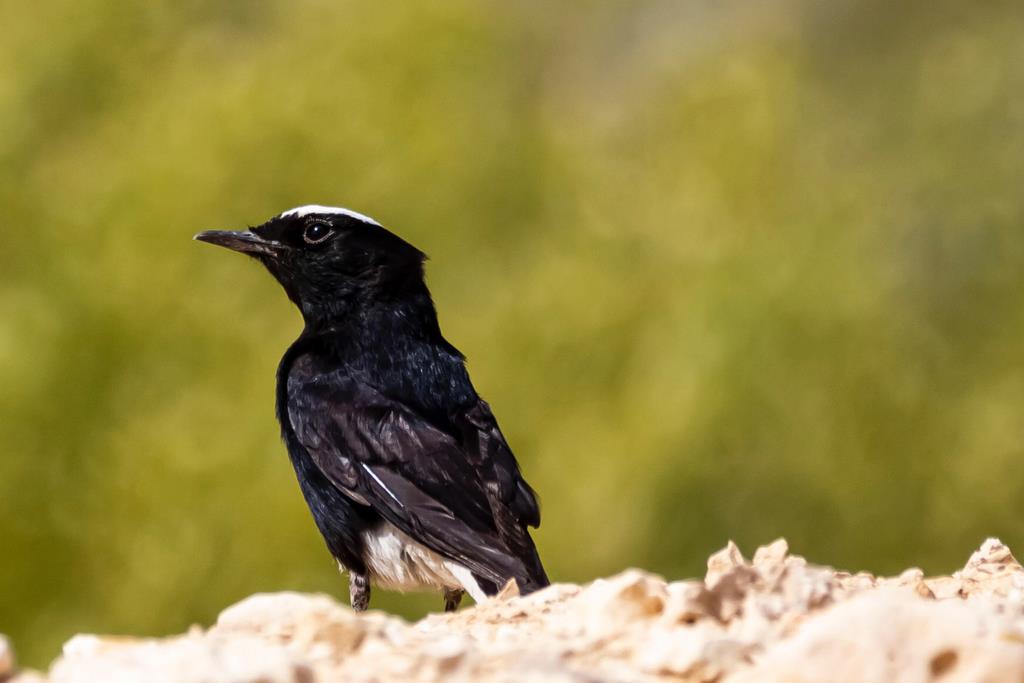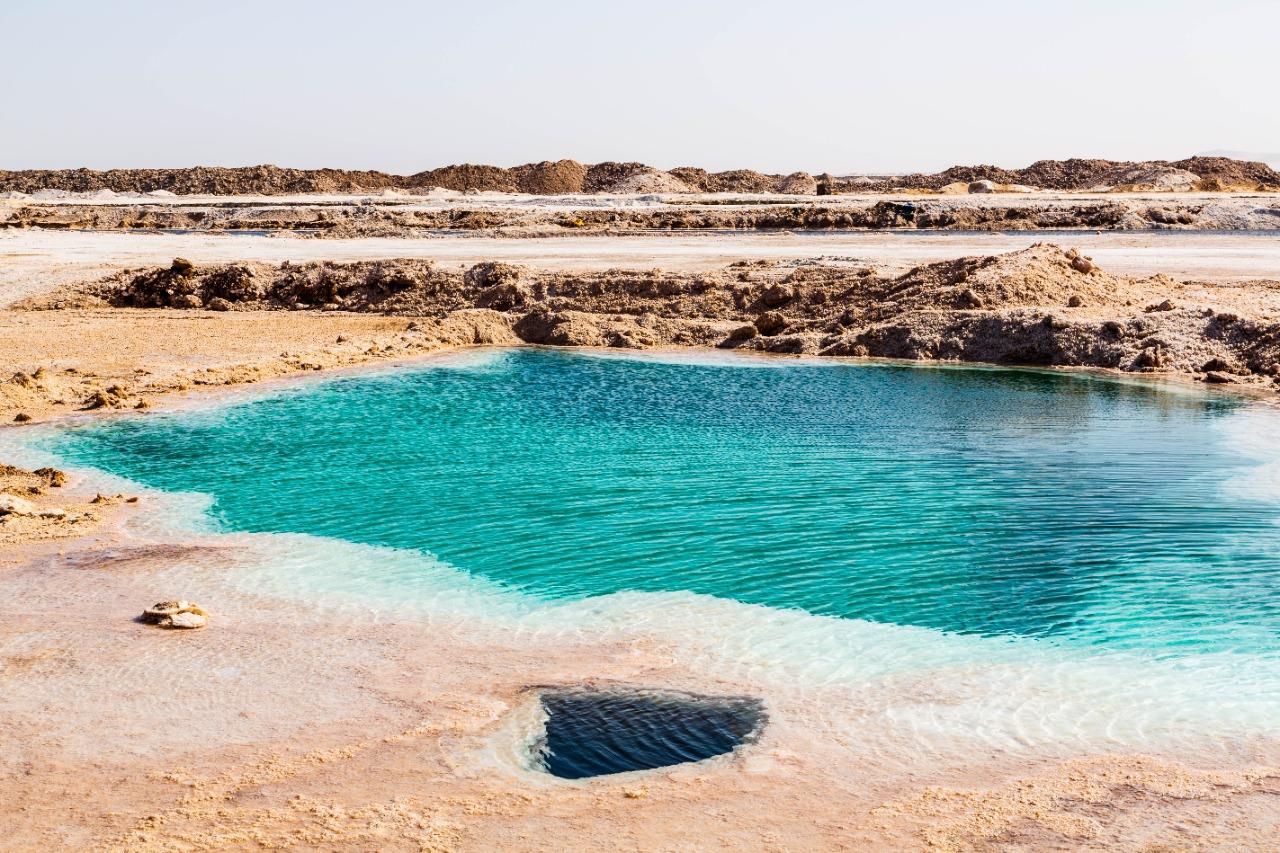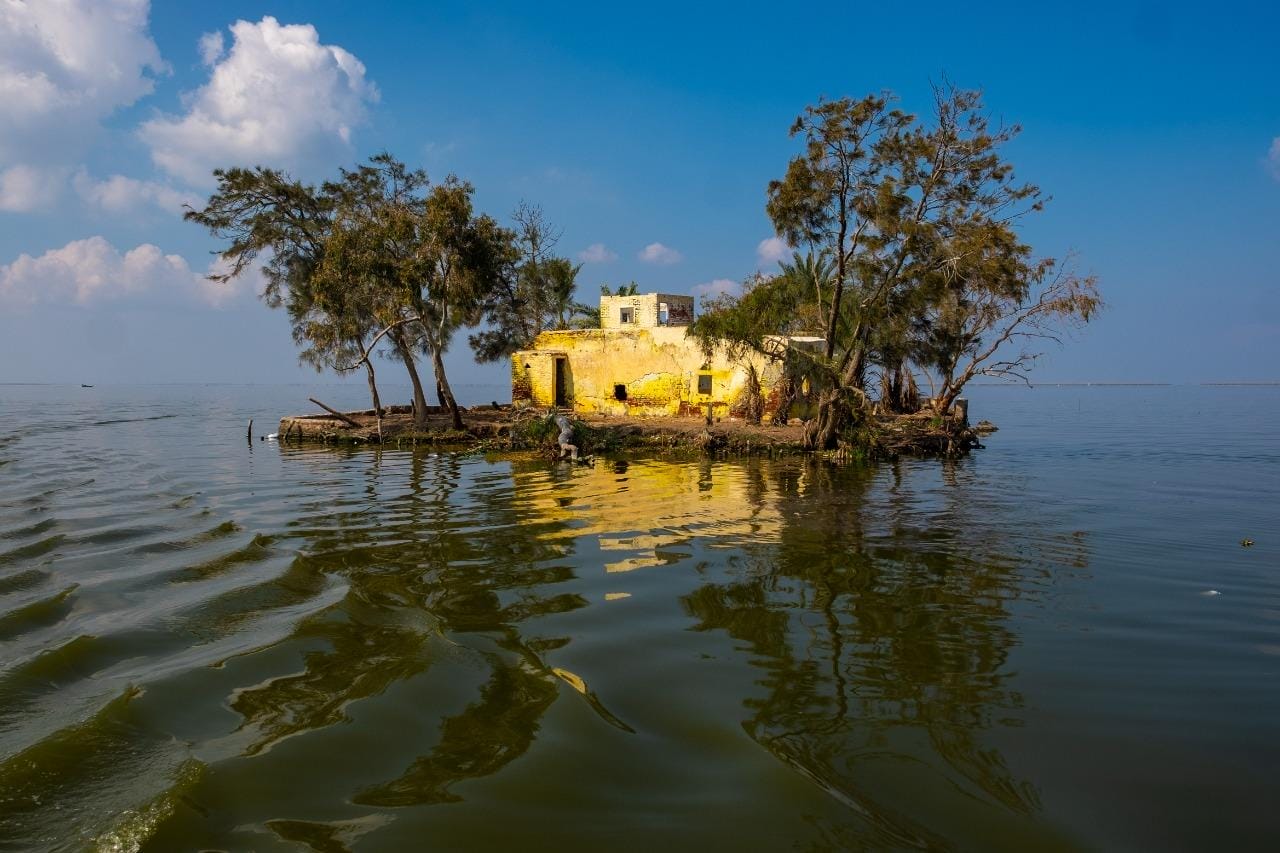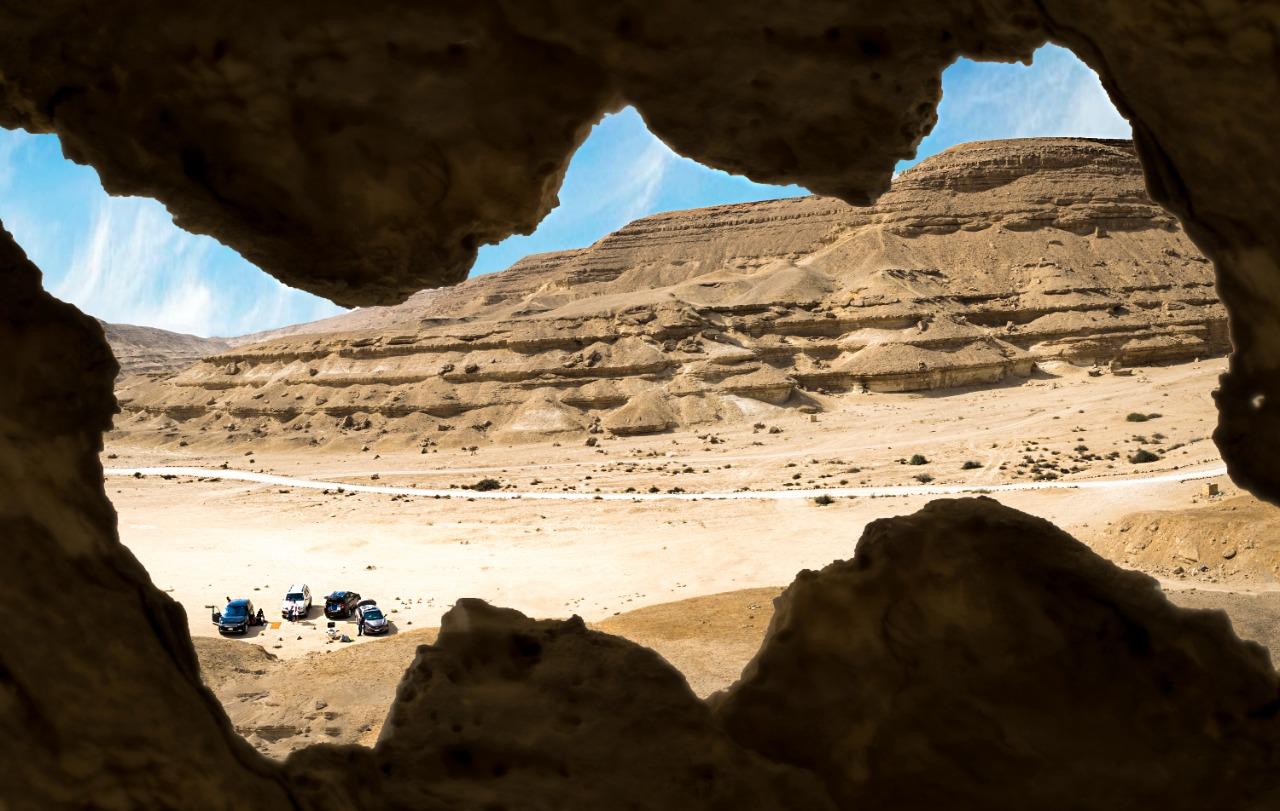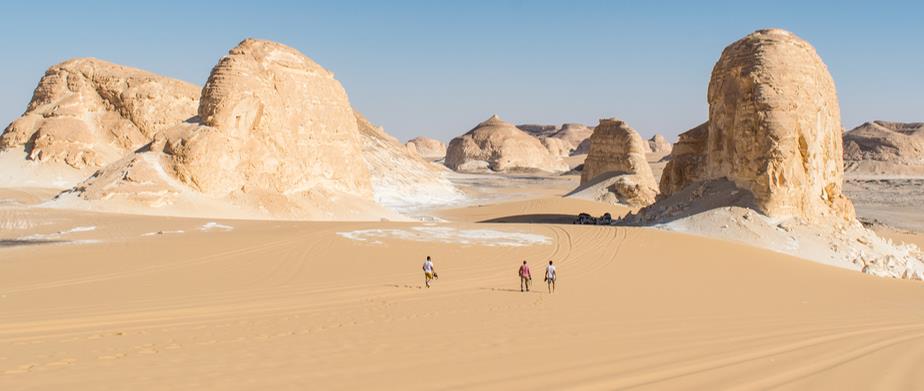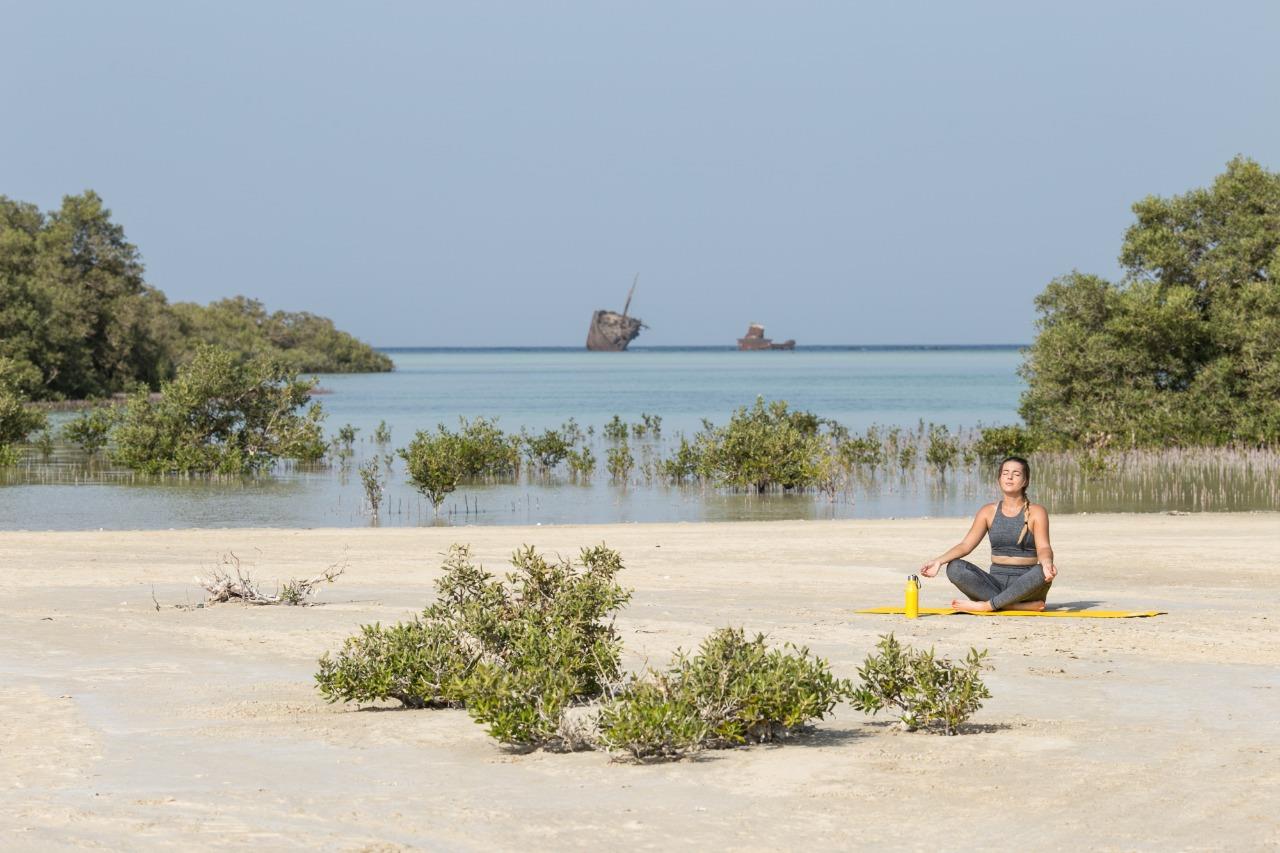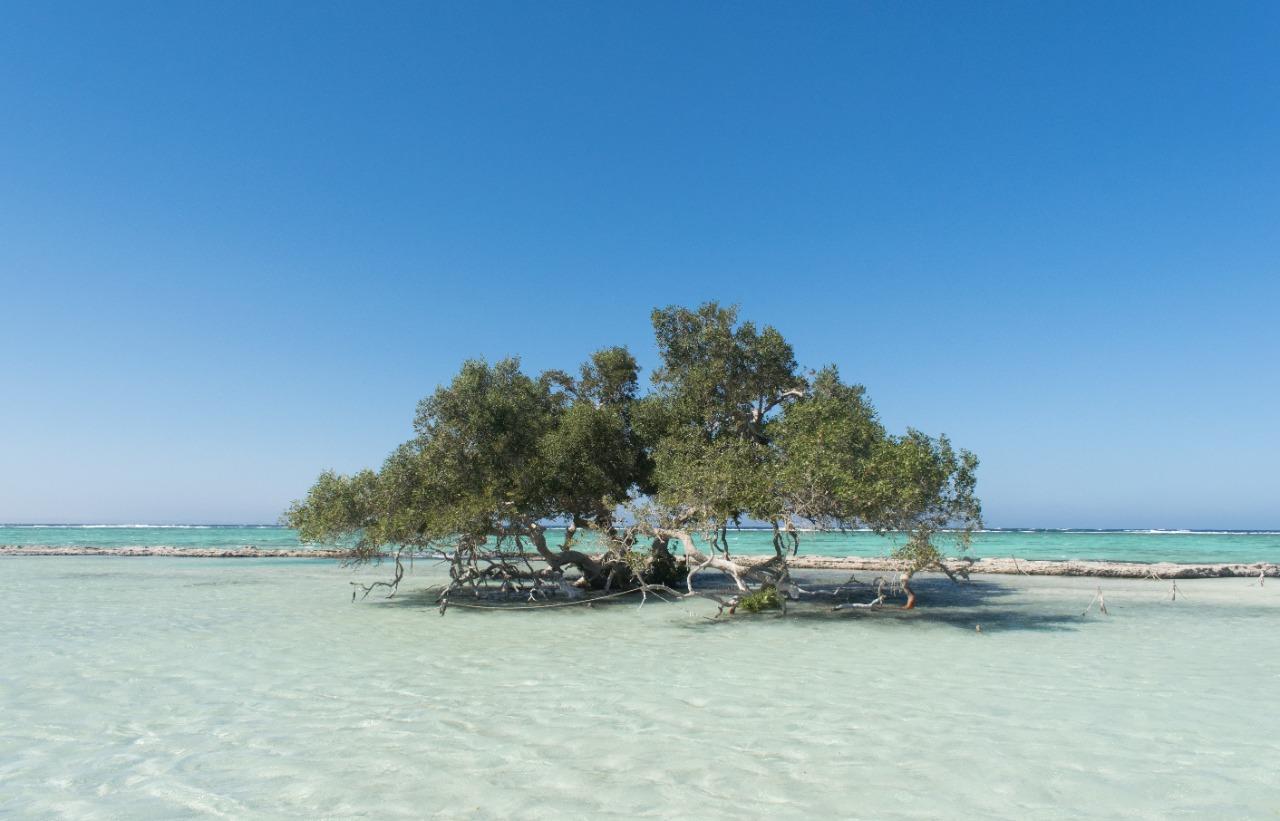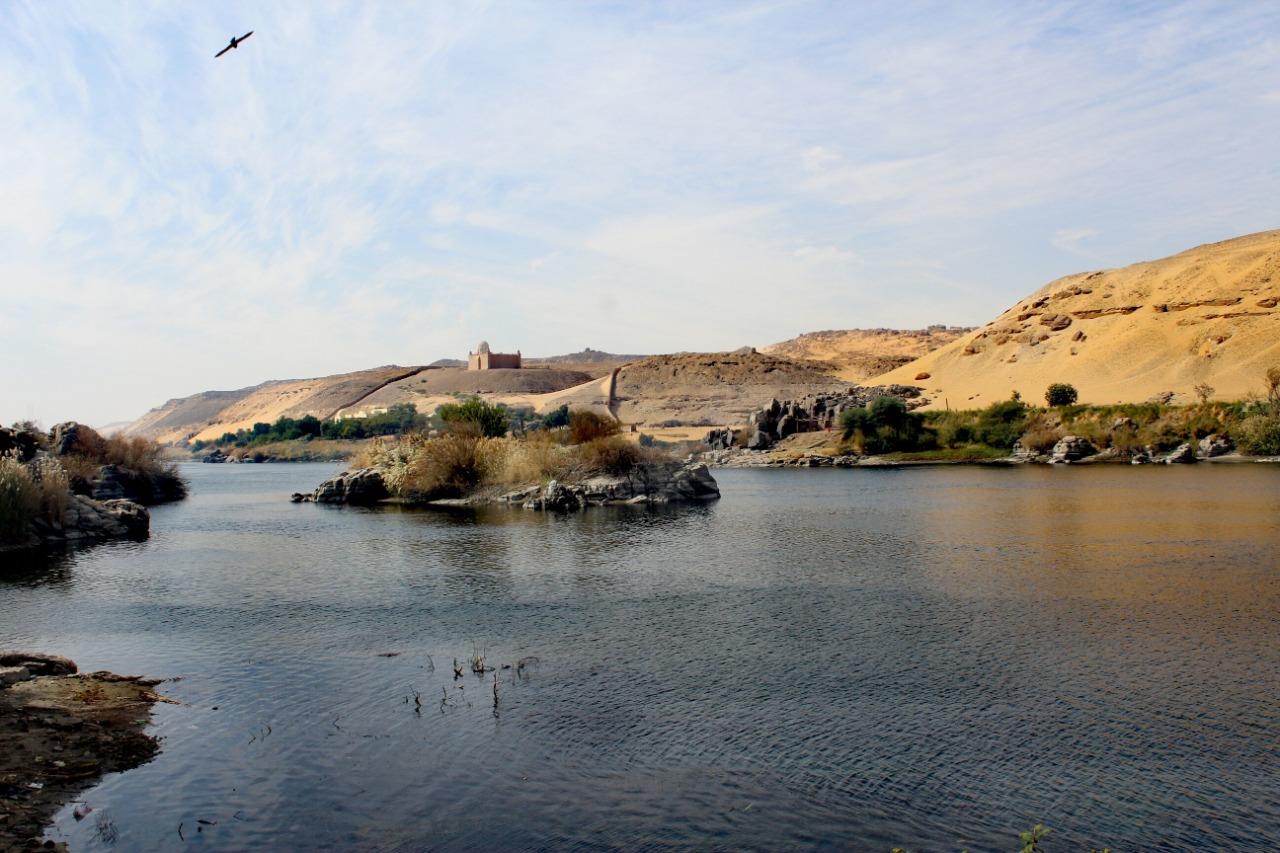Natural Protectorates
Egypt’s natural protectorates, which have scientific, historic, and cultural significance, span from Siwa to Fayoum, the Red Sea, and Aswan. Whether you are a desert enthusiast, a birdwatcher, or looking for treasures under the sea, there are countless opportunities to discover Egypt’s natural wonders
The Mediterranean Protectorates
Al Omayed Biosphere Reserve
This 700 sq km of coastal desert, half of which is dedicated to small-scale farming, lies on a tranquil stretch of the Mediterranean Sea. Ecological characteristics of the reserve include coastal dunes, limestone ridges, swamps, depressions, and an inland plateau. It has been designated as a UNESCO Biosphere Reserve and is continually observed because of its unique soil make-up and sustainable farming possibilities.
Al Salloum Protectorate
Located on the most northwestern edge of Egypt’s Mediterranean coastline, this marine protectorate has stunning blue waters, pristine sandy beaches, remarkable biodiversity, and a unique cultural identity. The borders of this protectorate are mainly in the water due to the rich sea grass meadows that support dozens of species of fish. Also integral to the biodiversity of the protectorate are the species of birds and reptiles and amphibians that call this place home.
Siwa Protectorate
One of Egypt’s largest and most adored protected areas is Siwa. This desert oasis spans approximately 7,800 sq km and includes the elevated Shali Fortress and the salty Shyata Lake. Lined with palm trees and hot springs, this isolated oasis is a hot spot for migratory birds such as flamingoes. The indigenous Dorcas gazelle can also be seen darting through the desert. The Siwan culture is also an element of the protectorate worth preserving. Greatly isolated for the majority of their history, Siwans have their own customs and language rooted from Amazigh ancestry.
The Delta Protectorates
Lake Burullus Protectorate
Egypt’s second largest lake, Lake Burullus, is located east of the Rashid (Rosetta) branch in the Nile Delta and contains around 50 small islands. Made up of salt swamps and sand plains, it has an abundance of aquatic vegetation. It is also a prime location for migratory birds, including the wigeon and the ferruginous duck. Maintaining this protectorate is essential for conserving its biodiversity and rehabilitating species that have become endangered due to a rise in human activity.
Ashtum al Gamil Protectorate
At the edge of a sandbar separating Lake Manzala from the Mediterranean Sea are Ashtum al Gamil and Tennis Island. This 180 sq km protectorate is one of Egypt’s most important wetland landscapes and breeding grounds for winter water birds. Hundreds of thousands of birds visit Ashtum al Gamil every year, such as flamingoes, seagulls, curlews, and even swans. It’s also a safe haven for many endangered bird species, including the wild and Zarkany ducks, shelduck, Sultan chicken, and Barbary dove. The shallow waters are also home to many fresh water fish species. Surrounded by 300 m of water is the archeological hill of the historic city of Tennis.
Cairo & Giza Protectorates
Wadi Degla Protectorate
A stone’s throw away from Cairo’s Maadi suburb, Wadi Degla is an easily accessible excursion from Cairo. The 50-meter-deep canyon cuts through 60-million-year-old limestone layers that reveal rare fossils and petrified wood. The rugged, rocky walls of the canyon are perfect for climbing and picnicking, and they offer shade during the hot hours of the day. Although shy from visitors, Wadi Degla is home to many animals, including mountain deer, red foxes, mountain rabbits, bats, and dozens of species of plants. Wilderness walks, biking, camping, and cook-outs are all popular activities in Wadi Degla, especially on the weekends.
The Petrified Forest Protectorate (Gabal al-Khashab)
Imagine a flood so massive that it washed trees from the hills of the Red Sea all the way to the edge of modern-day Cairo. 35 million years ago, a climate change triggered waves that washed over parts of Egypt. Resting in this spot for millions of years, the trunks have turned to stone and have since been part of the desert landscape. Although they feel like rocks, the organic rings and the bark of the trees can still be seen. Categorized as a National Heritage Site because of its historic and scientific value, this is one of a handful of petrified forest sites in the world.
Al Hassana Dome (Kobat al Hassana)
One of the smallest protected areas in Egypt, but one of the most significant geologically, is the one sq km Al Hassana Dome. Well-preserved fossils dating back to the Crustaceous Period (100 million years ago) and rocks from approximately 60 million years ago are part of the reason for this protectorate’s formation. Much like a natural museum, this site offers a chance to view the entire geological and climatological history of Egypt, unlike any other site.
The Western Desert Protectorates
Wadi al Rayan Protectorate
This UNESCO World Heritage Site, located just west of Fayoum, includes two lakes, sulfur springs, two mountains, golden sand dunes, and the only waterfalls in Egypt. Climb up to the top of Al-Modawara Mountain (Gabal al-Modawara) to take in the beauty of this protectorate. Views from the top include the nearby lakes and dunes, and it’s also a great place to spot some rare eagles or falcons. Magic Lake, which lies inside the protectorate, is one of the most beautiful desert landscapes in the Western Desert, and its surrounding sand dunes are a perfect spot for sandboarding. While traveling through Wadi al Rayan Protectorate, you won’t want to miss the prehistoric whale fossils of Wadi al Hitan. Many endangered animals call Wadi al Rayan home, including white deer, Egyptian deer, sand fox, wolves, and rare migrating birds.
Lake Qarun Protectorate
First recorded in 3,000 BC, this ancient lake used to be a large freshwater lake known as Moeris. The archeological sites surrounding the lake, such as the Old Kingdom Basalt Quarry, Qasr al Sagha Temple, Dimeh Archeological City, and Abu Leif Monastery, can keep you busy exploring for days. The magnitude of Lake Qarun’s cultural, historical, and scientific value is equaled by its natural heritage. Known as the birdwatcher’s paradise, Lake Qarun is home to nearly half of Egypt’s hundreds of bird species. You’ll be able to spot both flamingos and white pelicans here.
Sannur Cave Protectorate
At 40 million years old, Sannur Cave is considered to be one of the oldest caves in the world. Millions of years ago, percolating water filtered down through limestone and created geological features of stalagmites, stalactites, curtains, and columns. What was also created in this process was alabaster, which is why this area was a quarry site for pharaonic stonemasons. It has been declared a protected area for its geological and historic significance.
The White Desert Protectorate
This unique area has dunes, domes, and wind-carved chalk sculptures, making one of the most unforgettable desert landscapes in Egypt. Originating as an ancient seabed, this natural art gallery has been in the making for 30 million years! One-of-a-kind sculptures resembling mushrooms are locally referred to as “desert ice”. Inside the layers of limestone, you can easily spot marine fossils, such as sea urchins, mollusks, crustaceans, and coral reef. In contrast to the white carpet desert floor are the black hematite stones, some of which look like flowers or stars. Some animals that call this place home are the fennec fox, the Saharan horned viper, the sooty falcon, Egyptian gazelles, rams, and several types of reptiles.
Al Wahat al Bahariyya Protectorate
The area surrounding the Bahariyya Oasis showcases incredible sites that are home to desert wildlife, including the rare Egyptian wolf, sand foxes, and Dorca gazelles. Birds flocking to this oasis sanctuary include the Egyptian barn swallow, black and mourning wheatears, little stints, and the always magnificent white-throated kingfisher. In addition to its cultural and archeological sites, such as the Valley of the Golden Mummies and a 5th century Coptic church, Al Wahat al Bahariyya has a rich geological heritage. The Black Desert, formed by volcanic activity, is also located within this protected area, and the fossils from the world’s second largest dinosaur can be seen here!
Mount Kamel Meteor Protectorate
This is the site where an iron meteorite crashed into the earth’s surface 5,000 years ago in the southwest corner of Egypt. The 45-m-wide crater filled with sand was only recently discovered and excavated. The largest fragment unearthed weighs 83 kg and is currently displayed in the Egyptian Geological Museum in Cairo.
Al Gilf al Kebeer
One of the most remote protected areas in Egypt, Al Gilf al Kebeer Plateau, is where the events of the film The English Patient took place. The site holds thousands of traces of Paleolithic and Neolithic human history. What we understand from these traces of ancient life is that hunter-gatherers and pastoral communities lived side-by-side in a golden age for flora and fauna. From the remains of rock tools to rock carvings and paintings, to caves that housed these early humans, Al Gilf al Kebeer is a sprawling open window to human life at a time when the Western Desert was made up of freshwater lakes and greenery.
South Sinai Protectorates
Ras Mohamed
Ras Mohamed National Park, one of the most famous of Egypt’s natural protectorates, is located at the tip of the Sinai Peninsula, approximately 20 km west of Sharm al-Sheikh. Ras Mohamed (the head of Mohamed), named by locals because of a cliff inside the area that resembles a man’s profile, is renowned for its 8-km-long coral reef, unique marine and terrestrial wildlife, and unforgettable diving sites. A thriving mangrove forest, walls of coral reefs, sea caves, and unmatched marine inhabitants make Ras Mohamed a diving paradise. The meticulous conservation and preservation of Ras Mohamed’s rich, warm waters create a safe haven for hundreds of marine life species, such as the giant moray eel, clownfish, sea turtle, manta ray, hammerhead, and whale sharks.
Nabq Protectorate
The exceptional wilderness of the Nabq National Park along the Red Sea will amaze visitors. Spanning over 600 sq km, Nabq is the largest coastal protectorate in Egypt and includes terrains that range from mountains to sand dunes to a dense mangrove forest and offshore reefs. The natural spring within Wadi Kid attracts varied wildlife, such as Nubian ibexes, gazelles, and rock hyraxes. Many nesting grounds for osprey, white-eyed gulls, grey herons, the steppe eagle, and spoonbills populate the area, which is also a resting spot for migratory birds. Bedouin communities from the Al Mezina tribe live within the protectorate and are a model for sustainable living.
Abu Galum Protectorate
Any visit to Dahab would not be complete without an excursion to the Abu Galum Protectorate. With internationally renowned dive sites, like the Blue Hole and Three Pools, and unique coral reefs, Abu Galum is a must-see snorkeling and diving site. The stunning array of topography here is unlike any place in Egypt. It includes mountains, valleys, and the stunning Blue Lagoon with its crystal-clear waters and sandy beaches. The picturesque granite mountains within the protectorate also offer plenty of land-based activities, including nature walks, hiking, and safaris. Whether you tour Abu Galum by land or by sea, understanding this protectorate’s colorful and fragile biodiversity will be a rich experience.
St. Catherine’s Protectorate
The mountainous protected area of St. Catherine’s is spiritually, historically, geologically, and biologically significant. The St. Catherine monastery was founded in the 6th century, and it is the oldest continually occupied monastery in the world. It was designated as a UNESCO World Heritage site in 2002. From the monastery’s original gate, the Great Church, the Burning Bush Chapel, and its well-preserved library, visitors can see the dedication and hard work that has been put into safeguarding its relics. The monastery is built at the foot of Mount Sinai, an Abrahamic landmark and the tallest mountain in Egypt. Trips to the top to watch the sunrise or sunset are popular activities. Spiritual pilgrims travel to this spot year-round, but the natural heritage of this high-altitude protectorate is just as important. Here, you can see the world’s smallest butterfly, the Sinai baton blue; the caracal; and striped hyena. Flourishing in this region is the Sinai Wild Rose and the Acacia Tree.
Taba Protectorate
Taba’s designation as a protectorate has been crucial in protecting the wellbeing of its natural heritage. Regarded as one of the most unspoiled regions of South Sinai, Taba’s landscapes include valleys, steep mountains, fresh water springs, caves, and desert passages. The plant and animal make-up is a mixture between mammals, rare birds, reptiles, and plants that are all well-adapted to this regions’ climate and landscape. Visitors will also witness Bedouin culture and explore cultural and archeological sites, including the Nawamis, one of the world’s oldest stone-roofed buildings.
The Red Sea Protectorates
Wadi al Gemal – Hamata
Home to astonishing land and sea wonders, Wadi al Gemal National Park, located south of Marsa Alam, is made up of coastal desert, mountains, valleys, mangroves, seagrass beds, coral reefs, and the Hamata archipelago. Here in the Eastern Desert, one can witness the impact that fresh water from valley streams have on a desert environment and the unique biodiversity in a desert terrain. The rich biodiversity of this protectorate draws visitors in to see the rare dugong feeding on sea grass, opulent coral reefs, and the world’s largest nesting colony of the sooty falcon. Famous costal sites include the stunning Sharm al Luli bay, Ras Baghdadi, and Ras Hankorab. Ancient Roman structures and an ancient Egyptian mine can also be visited here.
Red Sea Northern Islands
A fragile ecosystem makes the conservation of these islands, and their inhabitants, essential. The islands of Egypt’s Red Sea are known for their unique mangroves and coral reefs that act as a breeding site for multiple species of birds and endangered sea turtles. Dolphins are commonly seen playing offshore, and snorkelers and divers alike will be delighted by these charming waters. As you sail or cruise around these islands by boat, you will also encounter countless underwater treasures.
Elba National Park
The complexity of Elba’s ecosystems and microclimates makes it one of the most diverse protected areas in Egypt. With 22 islands, mangroves, coral reefs, coastal sand dunes, coastal desert plains, coastal marshes, and coastal mountains, Elba is an earthly gem residing in the southeast corner of Egypt’s Eastern Desert. One of the main attractions is Gabal Elba, a 1,437-meter-high mountain that enjoys copious amounts of rain that allow unique flora, likes mosses, succulents and ferns, to grow. Multiple rare bird species and sub-Saharan mammals, like the zoril, the aardwolf, and even the occasional Struthio ostrich, are seen in this national park. The endangered sea cow, the dugong, makes its way here to feed on sea grass beds.
The Upper Egypt Protectorates
Saluga and Ghazal Protectorate
These two, small granite islands, north of the Aswan dam, are where time appears to have stood still. With dozens of species of flora, including several types of Acacia Trees, and birds, such as the pintail and the grey heron, visitors who come to Saluga and Ghazal will get a glimpse of what the Nile River Valley was like during ancient times.
Wadi al Alaqi Protectorate
Once a river, Wadi al Alaqi is the valley left behind after a large river dried up following the construction of the Aswan High Dam. This former river left behind nutrient rich soil that has turned the area into a green pasture for animals. Located in the Eastern Desert between the Red Sea and the Nile Valley, this UNESCO Biosphere Reserve is home to some iconic animals, such as the Nubian wild donkey, the Nile crocodile, the Nile monitor, and the Nile soft-shelled turtle. Bedouin tribes currently use the valley for their grazing animals and to collect medicinal plants.
Wadi al Assuti Protectorate
Unlike most of the protected areas in Egypt, Wadi al Assuti was given protectorate status in order to rehabilitate and breed endangered wild species of animals and plants. The desert ecology is fragile, and so, the cultivation of genes from agricultural crops will help Egypt, and other desert ecosystems, improve modern agricultural practices. Located in the Eastern Desert’s limestone plateau up through the Nile Valley, this plateau is home to endangered wildlife species like the Nubian ibex, the caracal, and some reptiles, including the spiny agama.
The Nile Islands Protectorate
Dispersed along the Nile River, this protectorate includes 144 islands within several governorates. The seasonal change in water levels leaves mudflats and sandy banks that support bird habitats. Thriving around these islands are many amphibious and freshwater invertebrates that call the Nile home.
Al Dababya Protectorate
Located south of Luxor, Al Dababya’s geological characteristics, including exposed layers of rocks from both the Paleocene (56 million years ago) and Eocene (33 million years ago) epochs, are a real-life timeline of earth’s past. Although Al Dababya isn’t the only place in the world where we can see geological events from these eras, it is extremely rare to find evidence of these two historical periods present in rocks at the same location.
